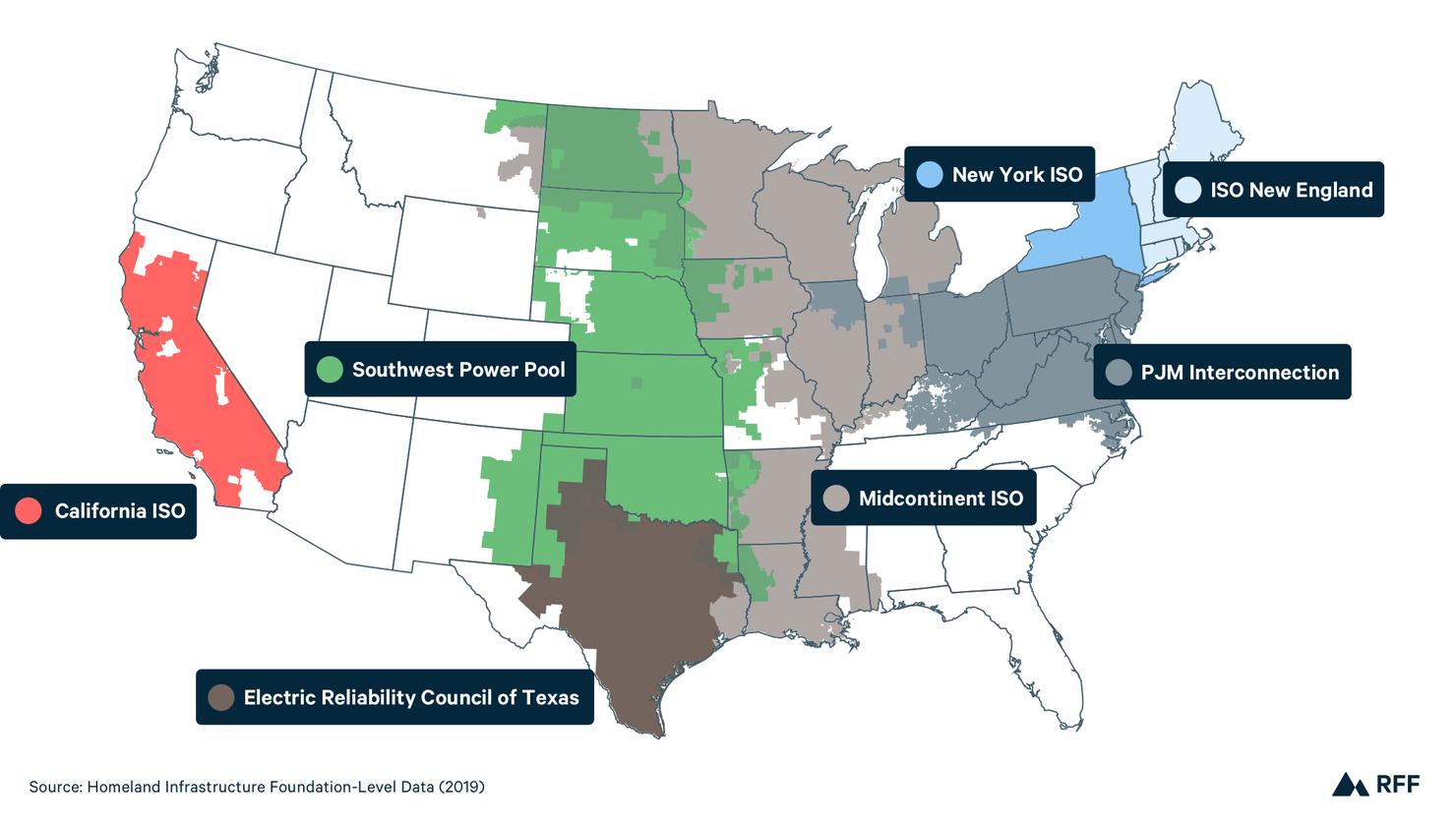Electricity 101: Terms and Definitions
An overview of terms and definitions pertinent to the electric grid and power industry
This explainer was created to accompany other electricity-related explainers; it includes definitions of some of the central terms related to the electric grid and the power industry.
The Electric Grid
There are three main steps in the process of getting electricity to a home or business: generation, transmission, and distribution.
Generation refers to the process of converting energy into electricity. Power plants generate electricity from a variety of energy sources, including fossil fuels (coal, oil, and natural gas); nuclear reactions (fission); and renewable sources (such as solar, wind, and hydroelectric power).
Transmission refers to transporting electricity (typically over long distances) from the power plants where it is generated to the neighborhoods and cities where it will be used. For each mile electricity travels, some power is lost. Electricity is transmitted at high voltages to minimize this loss and make transmission more efficient.
Distribution is the process of transferring electricity over the relatively short distance from transmission cables into a home or business. Between the transmission and distribution power lines, transformers in distribution substations “step down,” or decrease, the voltage to the levels required in households and businesses.
Natural monopolies occur when, for practical reasons, a service or good is only provided by one entity in a region. They exist due to high fixed costs (expenses that do not change depending on the amount of goods or services produced), which make it inefficient for more than one entity to provide a given product or service. Transmission and distribution services are natural monopolies; building more than one set of power lines in a given area is not practical.
The electric grid (or just the grid) is made up of the network of transmission and distribution infrastructure—power lines, transformers, and other equipment—that powers a region.
Electricity is generated using a variety of different sources. Once it flows onto the grid, however, electricity from different sources cannot be differentiated. The electricity on the grid is similar to the water in a pool; if several people pour water into a pool, the water mixes together and the water from different sources cannot be distinguished.
The United States is divided into multiple interconnections, which are grids that cover large regions of North America. The interconnections are not connected to each other; electricity flows throughout each interconnection as described above, but it does not flow from one interconnection to another. The different interconnections are shown on the map below.
Who’s Who in the Power Industry?
There are many different players involved in the electric power industry. In some cases, generation, transmission, and distribution are all controlled by one entity; in other cases, different entities perform different parts of the process. For more detail about how these entities operate and relate to one another, check out “US Electricity Markets 101.”
Electric utilities are public or private entities that own and operate the transmission and distribution lines that transport electricity and supply it to households and businesses.
Vertically integrated utilities are electric utilities that own not only transmission and distribution infrastructure, but also the power plants responsible for electricity generation. They control every stage of the electricity production process in the areas they serve.
Generators are power plants used to generate electricity.
Load serving entities (or local distribution companies) deliver electric power to customers. In some regions, load serving entities generate their own electricity, while in others they simply provide the grid infrastructure required to deliver electricity to customers.
Electricity retailers sell electricity to consumers in regions with deregulated electricity markets. In these regions, local distribution companies own the distribution infrastructure and deliver electricity to customers.
Electricity consumers purchase and use electricity. The total amount of electricity used by all consumers on a grid is known as the load or the demand.
Grid operators (also known as transmission system operators) balance grid operations by ensuring that the amount of electricity put into the grid matches the amount of electricity used by consumers. They work with all of the utilities, generators, and retailers to ensure that the grid is balanced and reliable: too little power can cause blackouts, while too much can cause damage to equipment.
In some regions, electric utilities act as grid operators. In other areas, the grid is operated by regional transmission organizations (RTOs) or independent system operators (ISOs), which are different types of organizations that operate the grid but do not own the resources and infrastructure within it (power plants and power lines). The map below illustrates the areas operated by RTOs in the United States.
Regional Transmission Organization Map







